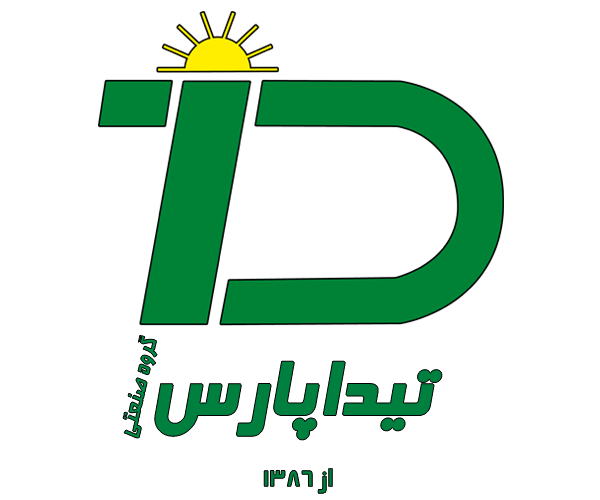Seed plating is an efficient process for those vegetables and summer herbs as well as medicinal plants such as tomato, eggplant and chamomile that have very small seed size.
Mechanized cultivation of seeds in hydroponic greenhouses is done using an automatic seed cultivation machine. The seed planting machine is called seed tray seeder, seeder machine, seed planting machine in plug tray, and often seeder among the greenhouses.

The importance of planting, not planting and multiple plantings in seed cultivation:
Due to the increase in the cost of agricultural inputs, especially the purchase of seeds, planting medium and all kinds of fertilizers, the importance of single planting (planting a single seed in each hole of the tray) has become much more prominent than before.
Therefore, the attention and concern of greenhouse owners in the field of mechanization and working with automatic seed cultivation devices in order not to waste seeds in the form of multiple plantings or not to plant seeds and reduce the circulation of their production and germination orders is very understandable and justified.
Automatic seed sowing machine:
In this regard, the TIDAPARS automatic seed sowing machine with the ability to plant all types of pellet and non-pellet seeds per hour at least 1200 plug trays and approximately 3600 Styrofoam trays has been cultured, irrigated and provided to the farmer or greenhouse owner in the form of ready batches.

How is TIDAPARS seeder function?
This function is defined with 0 percent error for all types of pelleted seeds and 2-3% percent error for impurity, hollow and non-granulated seeds, and it is currently working in all provinces of the country and other countries.

Seed pelleting:
Pelleting the seeds is one of the first actions to plant the seeds. Usually, in order to provide the conditions for sowing the seeds and to make them easier to plant. should be done on the seeds. One of the most important actions to prepare seeds is seed plating. Seed pelleting creates a coating on the seed and makes the seed bigger.

Types of seed pelleting methods:
Seed coating is divided into different types according to the physical characteristics of the seeds. In general, the types of seed coating methods include these methods:
1. Film coating: one of the main seed coating methods is seed film coating. In this type of seed coating, a thin layer is added to the outer surface of the seeds. This amount usually includes less than 10% of the weight of the seed.
2. Incrusting coating: in this type of seed coating, when the weight of the seed increases by 100 to 500% due to the type of morphology (appearance) due to the coating materials; This method is known as “seed encrusting”.
3. Seed pelleting: When the amount of material added to the out surface of the seed changes the initial shape of the seed, this method is called seed pelleting.
4. What materials are used for seed pelleting?
Materials used in seed pelleting are classified according to the type of binders and fillers. Seed pellet binders are polymers of natural or synthetic origin that create cohesion of materials on the seed and preserve the active compounds used in the coating. Seed pellet binders are also usually used in liquid form (dissolved in water or other solvents). Different layers of polymer can be applied at different stages of the seed coating process, some of these layers are used as carriers and others are buffer layers to avoid direct effect between active layers and seeds, external space or other layers. prevent each other.

Advantages of seed pelleting:
Seed protection against fungal diseases
Increase in seed weight
Ease of cultivation
More precise cultivation (color coating of these seeds increases control during cultivation)
Fast germination (10% more than uncoated or regular seeds)
pH adjustment
Improving absorption of substances
Improving soil quality
Increasing efficiency in the use of nutrients
Reducing the need for some fertilizers to some extent
Increasing seed health
Increasing resistance to diseases
How does pelleting affect the seed?
When the seeds are coated, their germination and growth is affected. The coating actually causes the seed coat to swell during dewatering, which will increase the amount of water stored in the seed. Then, the seed coating improves and accelerates the germination process by Absorbing water. This work will also improve the growth of the roots by increasing the better influence of the seed with the soil.
Why do they pellet the seeds?
To make it easier to plant them, tomato seeds are actually very small seeds and it is difficult to plant them by hand or even by machine. It is time-consuming and expensive, to reduce this problem, tomato seeds have been made bigger by coating.
Pelleted seeds grow better or bare seeds?
In most pellet seeds, as soon as the seed receives water and swells, the pellet opens and the same seed remains bare. But in some cases, especially when the pelleted seed is cultivated in clay, because the external pressure is high. And the seed can’t open the coat, fewer of the plated seeds will germinate…

we would like to conclude as follows:
First, bare seeds and pellet seeds have no difference in terms of authenticity. Secondly, there is a possibility of fraud in both seeds, and even in canned seeds, the possibility of fraud is higher. On the other hand, if it is about fraud, in most cases you cannot distinguish between fake and non-fake seeds.
Seed coating/covering is a process of providing plant growth promoting substances with seeds to improve seed quality. seed pelleting technology is widely used in many developed and developing countries.
high physiological quality is demanded by farmers.
Seed industry contribute about 15–20% increase in crop yield.
The purpose of pelleting seeds:
The purpose of this process is to modify the physical characteristics of the seed and to provide the effective elements needed by the seed. The Physical changes of the seed are studied with the aim of standardizing the size and volume of the seed in order to increase seed efficiency.

Reason for pelleting of seeds:
In some cases, where the aim is to reduce friction and improve the flow ability of the seed (for example, for the convenience of seed flow in seeding machines), the change of morphology by the seed coating process is minimal and only a thin layer, but in the case of small seeds (for example, Begonia or tobacco seeds), expensive seeds or seeds with high morphological irregularities, the coating or coating applied in the seed coating process often includes a thicker layer.
Artificial seed coating:
Artificial seed coating is often used as a carrier of various active elements. With the introduction of seed coating technology in developing countries, the global market of materials such as polymers, paints, etc., which are used in seed coating, is expected to reach 1.63 billion dollars per year by 2020. Currently, seed coating is performed almost exclusively on agricultural and horticultural species, and the application of this technology to wild plants is limited to ecological restoration.
Conclusion:
Seed coating, which can be called seed covering, is a method that has become a necessity in many horticultural and agricultural industries around the world, and its global value in 2014 reached 53.76 billion dollars. It is estimated in the year. Seed coating is the process of artificially applying different external substances on the natural seed coating.
CEO: Faegheh osanlou-09904823436
TIDAPARS R&D manager
Fatemeh safaei-09103218554








